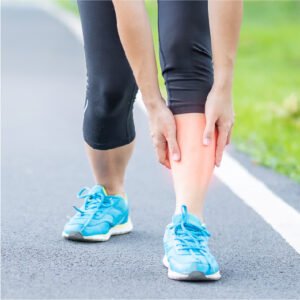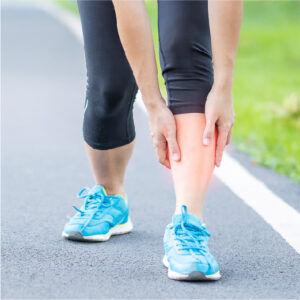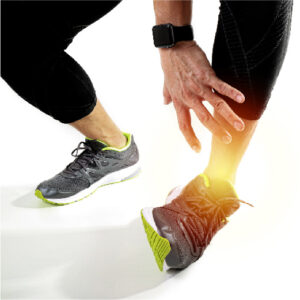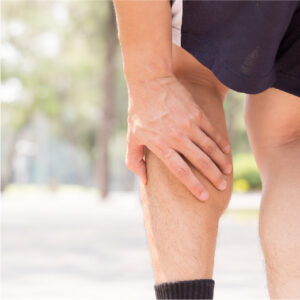Foot and Ankle Pain
The ‘foot and ankle’ is a complex group of joints that plays an important part in allowing us to stand, walk and run. The ‘foot and ankle’ also plays an important biomechanical role in the rest of the body and can directly influence movement at the knee and ankle. Pain in the foot and ankle is seen across the lifespan, in either sports-related ankle sprains, plantar-fascia pain or different arthritic conditions.
Shin Splints
Shin-splints is a commonly seen in runners or walkers, although it can affect anybody. It is characterised by a dull pain along the front or inside of the tibia, or shin-bone.
Muscular imbalances around your shin, shoe choices or sudden increases in your running load are often the cause. Talk to your physiotherapist about what the best management plan for you will be.

Plantar Fasclitis
The plantar fascia is a thick band of connective tissue that is located on the under-surface of our foot.
It is highly important in absorbing our weight as we walk, run and jump, as well as propelling us forward. It is an important structural piece in our longitudinal arch. The plantar-fascia is designed to handle quite large forces, but when it experiences abnormally large loads, or is strained over time, it can be a common source of pain.

Ankle Sprains
The ankle-joint requires a lot of different ligaments to keep it stable, preventing too much movement from side-to-side.
Often during high-velocity movements, or during sport, the ankle can get stretched outside of the limits of these ligaments. In these cases, the ligaments can become stretched, strained or torn. This can result in pain and instability at the ankle joint. Talk to your physiotherapist about the best management plan for your ankle strain.

Achilles
The achilles tendon is located at the back of the heel, connecting the muscles in your calf to your calcaneus (heel bone).
It is the largest tendon in your body and transfers a lot of force into the foot, helping us to walk, run and jump. Tendons are designed to take a lot of force, but in cases where there is repetitive force and load, the achilles tendon can respond and develop pain. This is called Achilles Tendinopathy.
